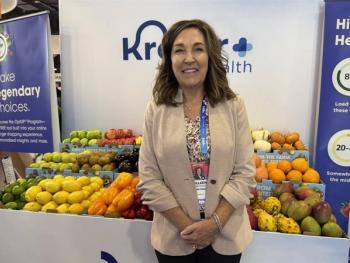
Saint Luke’s Health System sees early success with hospital at home
The system based in Kansas City has seen low readmission and high patient satisfaction. Michael Nassif of Saint Luke’s talks about the program.
When Saint Luke’s Health System in Kansas City launched its hospital-at-home program in July 2022, Michael Nassif hoped to see some encouraging results.
So far, patients are faring better than he had hoped.
Nassif directs Saint Luke’s program, which delivers acute care to patients in their own homes. Nassif tells Chief Healthcare Executive® he’s been most surprised to see that patients at home aren’t suffering delirium.
“I knew it'd be better, but we've literally had zero delirium, zero patients confused and ripping out their IVs and not knowing where they are,” Nassif says. “It's really amazing when you keep people at home and with their loved ones and comfortable environment, how much better they do in terms of both confusion and delirium.”
- Read more:
Hospital at home | Special report - Read more:
Hospital at home and health equity
Patients at home are getting more sleep, and they’re getting less disoriented, Nassif says. In a hospital, patients are routinely woken up and it’s harder for patients to sleep in an unfamiliar setting.
“Being a ‘hospital-based doctor’ before the hospital in your home, I always thought that delirium was a combination of their acute illness, whether it be you know, pneumonia, urinary tract infection, and being in the hospital,” Nassif says. “Now, having done this hospital for over nine months now, I'm convinced 99% of it … it's being in the hospital.”
While Saint Luke’s has offered home-based service to some patients with dementia when they were first admitted, “We have nobody who's mental status has gotten worse during the hospital-in-your-home period,” Nassif adds.
“And I think it's just a testament, that familiar environment, the decent night's sleep, our beta patient satisfaction is incredibly high,” he says.
To date, patient outcomes and patient satisfaction are exceeding expectations, he says.
(Michael Nassif of Saint Luke's talks about the hospital-at-home program in this video. The story continues below.)
Low readmission
In the COVID-19 pandemic, the federal government has allowed more hospitals to offer acute care services in the home. While only a handful of hospitals offered such services before 2020, there are 277 hospitals in 37 states authorized to deliver acute care at home as of March 20, according to the
Saint Luke’s hospital-at-home program is growing, with services moving from one hospital to three hospitals. Through early March, the program has treated 275 patients.
So far, Saint Luke’s is offering home-based services to patients on Medicare.
“I honestly think that's probably who benefits the most from this … elderly patients who stay in a familiar comfortable environment,” Nassif says. Patients at home can be up and around more, and spend less time lying in bed than they would if they were in the hospital, he adds.
With the home hospital program, patients have avoided catheter-associated bloodstream infections and pressures ulcers, Nassif says.
So far, the 30-day readmission rate for patients in the hospital-at-home program is around 8%, which is lower than the readmission rate for those treated inside the hospital, Nassif says. The average hospital readmission rate for all causes is 15%, according to
Patients have to be screened carefully, and those who need intensive care aren’t candidates for home-based service.
But he says Saint Luke’s isn’t “cherry picking patients” for the hospital-at-home service. Some patients are more acutely ill than some of the typical patients getting care in the hospital, he adds.
Many of the patients in Saint Luke’s home hospital program have a diagnosis of congestive heart failure, and some have some form of chronic lung disease. During the winter, the program has had a number of patients with COVID-19, influenza or RSV.
A fast-growing segment of the patients getting care at home are those with cancer. Nassif says he’s looking forward to treating more cancer patients in the home, since that’s “a population that probably really benefits from not being around hospital germs … where it's probably much better to keep them at home, and give them IV fluids and IV antibiotics in their home.”
‘Win across the board’
As the program has grown, Saint Luke’s has had to bring in more staff, which Nassif says is more complicated than other staffing models. The hospital-at-home program requires nurses, nurse practitioners, paramedics and “lots and lots of couriers, and things you don't normally think about when you're talking about a hospital program,” he says.
Since Saint Luke’s serves patients in both Missouri and Kansas City, the system has to deal with two different state regulatory bodies. Right now, Saint Luke’s is only able to offer acute care services at home to patients in Missouri. Nassif says he hopes Saint Luke’s can provide hospital-at-home in Kansas by the middle of the year.
Patients in Saint Luke’s program need to be within a radius of about 25 miles of the hospital. The system has provided home hospital services to some patients living in rural communities.
“We’ve had a couple of patients fairly well out in the sticks,” he says.
Under Medicare rules for acute care programs in the home, clinicians must visit the patients in person at least twice per day. So far, Saint Luke’s is averaging three or four visits per day, Nassif says. The record, which Nassif hopes stands for a long time, is 11 visits to the home in one day for a patient that did not wish to go to the hospital.
Saint Luke’s will provide a router, along with a tablet and other tools to measure the vital signs of patients. He says the system has had no issues with WiFi in rural areas.
So far, Saint Luke’s has only seen one issue with WiFi, and that emerged when hundreds of thousands of giddy football fans packed downtown Kansas City for a parade celebrating the Chiefs’ victory in the Super Bowl in February. One patient lived near the parade route and had some WiFi issues, so Saint Luke’s sent a paramedic to be with the patient for four hours.
While patients have preferred being cared for at home, Saint Luke’s staff are enjoying the chance to work in a different environment, Nassif says. So far, the system has retained all of the registered nurses that began working with the hospital-at-home program during the July launch. Nurses say they enjoy spending more time with patients and getting to know them better.
The high patient satisfaction is also related to nurse retention, Nassif says.
“When a patient sleeps in their own bed and has a good night's sleep, they tend to be much, much happier and much more pleasant,” Nassif says.
As for the nurses, “They see these patients, how well they're doing, and the patients are so grateful,” he adds. “And they express that to the nurses.”
Ultimately, patients have to be willing to embrace the hospital-at-home concept, Nassif says. And so far, that appears to be happening.
“You can show all the outcomes in the world. But if the patients don't like it, it's not going to catch on,” Nassif says. “But this is where we have, I think, a win across the board. Our outcomes are improved. The patients like it. And as I mentioned, I think we're going to have amongst the highest staff retention and staff satisfaction in the health system.”

















































